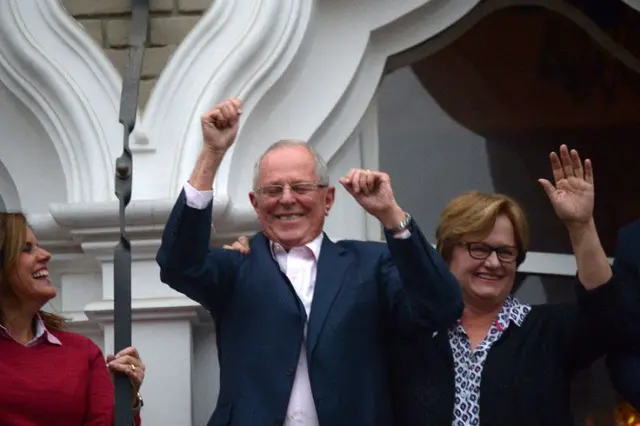The former World Bank economist Pedro Pablo Kuczynski maintained a very narrow lead over his rival Keiko Fujimori in the tightest presidential race in Peru in more than two decades.
Kuczynski, 77, had 50.32 percent of the vote against 49.68 percent for Fujimori, with 92.55 percent of votes counted, National Office of Electoral Processes (ONPE) director Mariano Cuchos said on Monday.
With less than one percentage point between the two candidates, the election is the tightest in Peru in 25 years, according to Peruvian daily El Comercio.
Both sides are anxious to get a final result. However, Cucho said, both candidates should remain calm until all votes are fully tallied.
The tight race was likely due to a lack of ideological differences between the two candidates. Kuczynski and Fujimori could name the same economic minister, political analyst Arturo Maldonado told local media.
The winner will assume presidency on July 28 with a mandate of five years.
Kuczynski will install a government of national unity in order to bring parties together, should his victory in Sunday's elections be confirmed, said Martin Vizcarra, vice presidential candidate from Kuczynski's Alliance for Change (PPK) party, on Monday.
Vizcarra said that Kuczynski would seek to bring together all of Peru's political forces to reach a broad understanding.
"We have the obligation of taking Peru forward. It is very important for us to see agreement between the capital and all of Peru's regions," said the potential vice president at a press conference.
He added that one of the priorities of a Kuczynski administration would be to bring various political organizations into government in return for their support in barring the 41-year-old Fujimori from power.
Maintaining economic growth will perhaps be the main challenge facing the next Peruvian president, said Carlos Aquino, director of economic research at the National University of San Marcos, in an interview with Xinhua.
"Despite having problems, the Peruvian economy is growing at an average rate far higher than other Latin American countries," and Peru should reach 4 percent GDP growth in 2016, Aquino said.
"However, there are still uncertainties among the private sector as to what the next president's economic priorities will be, as this sector has not grown as much," he said.
For the economist, while the two candidates share a common vision for economic development, Kuczynski's experience as former economic minister and World Bank economist does mark the difference between them.
"Kuczynski is likely to follow the economic policy Peru has adopted since the 1990s, as he has been minister of economy, an investor and has many contacts around the world," Aquino said.
However, while Kuczynski's experience could boost investor confidence, he might not enjoy a majority support in Congress for his full economic agenda, Aquino added.
A Fujimori presidency, though, would likely put more emphasis on social programs, particularly since her Popular Force party has an absolute majority in Congress, with 73 lawmakers out of 130, the expert said.
Unlike Kuczynski, Fujimori's weakness lies in the fact that she has never held any political office, Aquino added.
(APD)
 简体中文
简体中文

